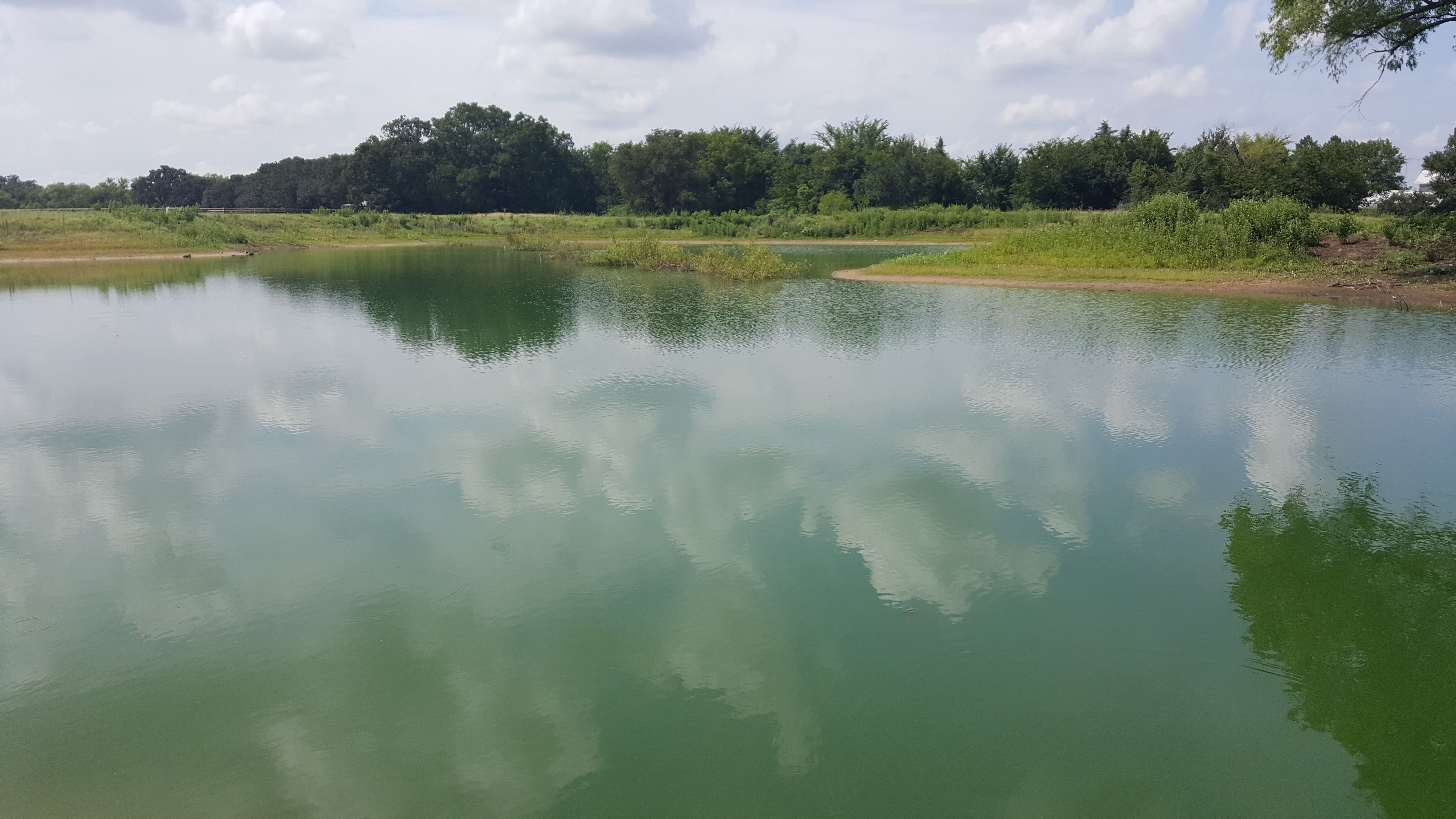When pond and lake owners think of algae blooms, they are most often visualizing Filamentous Algae or the “scum” that grows in long, stringy “filaments” in the shallow areas of their fisheries (like you see in the photo below).
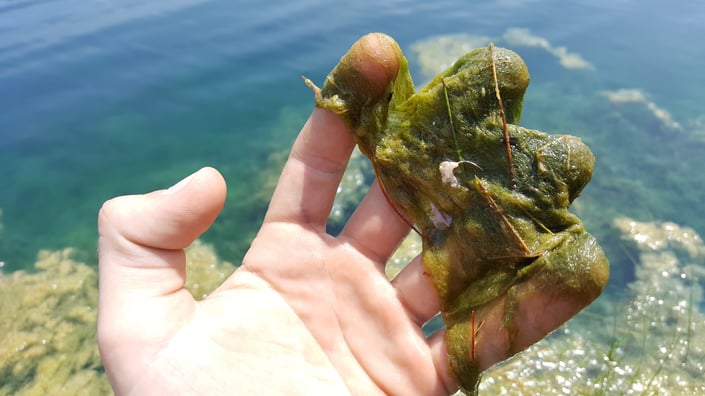 While this is still a true Algae, it is viewed more as a nuisance species than a beneficial part of the ecosystem and is not the type of Algae we're going to focus on today.
While this is still a true Algae, it is viewed more as a nuisance species than a beneficial part of the ecosystem and is not the type of Algae we're going to focus on today.
Good Algae Blooms Can Improve Your Pond When Managed
There is a type of algae bloom in a pond that, when managed correctly, can actually be beneficial to your fishery. Instead of focusing on why algae blooms are bad in a pond, we’re going to focus on beneficial algae blooms in ponds.
Phytoplankton = Good Algae When Properly Managed
There are many different species of algae that are broken up into three main categories:
- Macro-algae
- Filamentous Algae
- and Planktonic Algae
Planktonic Algae Provides the Most Benefit to Private Ponds
The type of algae bloom I want to focus on is the one that provides the most benefit to your pond or lake. That is the Planktonic Algae, specifically phytoplankton.
How Do Phytoplankton Help Lakes and Ponds?
These single celled primary producers (make their own energy from the sun) are the base of the food chain for your entire fishery. Microscopic organisms (zooplankton), larval fish, and even certain larger fish species such as Threadfin Shad consume these tiny cells as their primary diet. This makes the presence of planktonic algae (phytoplankton) vital to the health of your fishery.
How Do Fisheries Biologists Determine Proper Algae Density?
Here at Pond King, we make recommendations on the proper density of an algae bloom based on the clarity of the water.
Check Your Pond for the Secchi Depth!
The technical term for this reading is called a Secchi Depth, it sounds complicated but is actually very simple. To get this reading you take a white or reflective object, like a pie tin, and attach it to a yard stick or string. You then lower it into the water, and the depth at which you are no longer able to see the object is the Secchi Depth.
When we take measurements, we actually use a tool called a Secchi Disk (seen in the photo below).
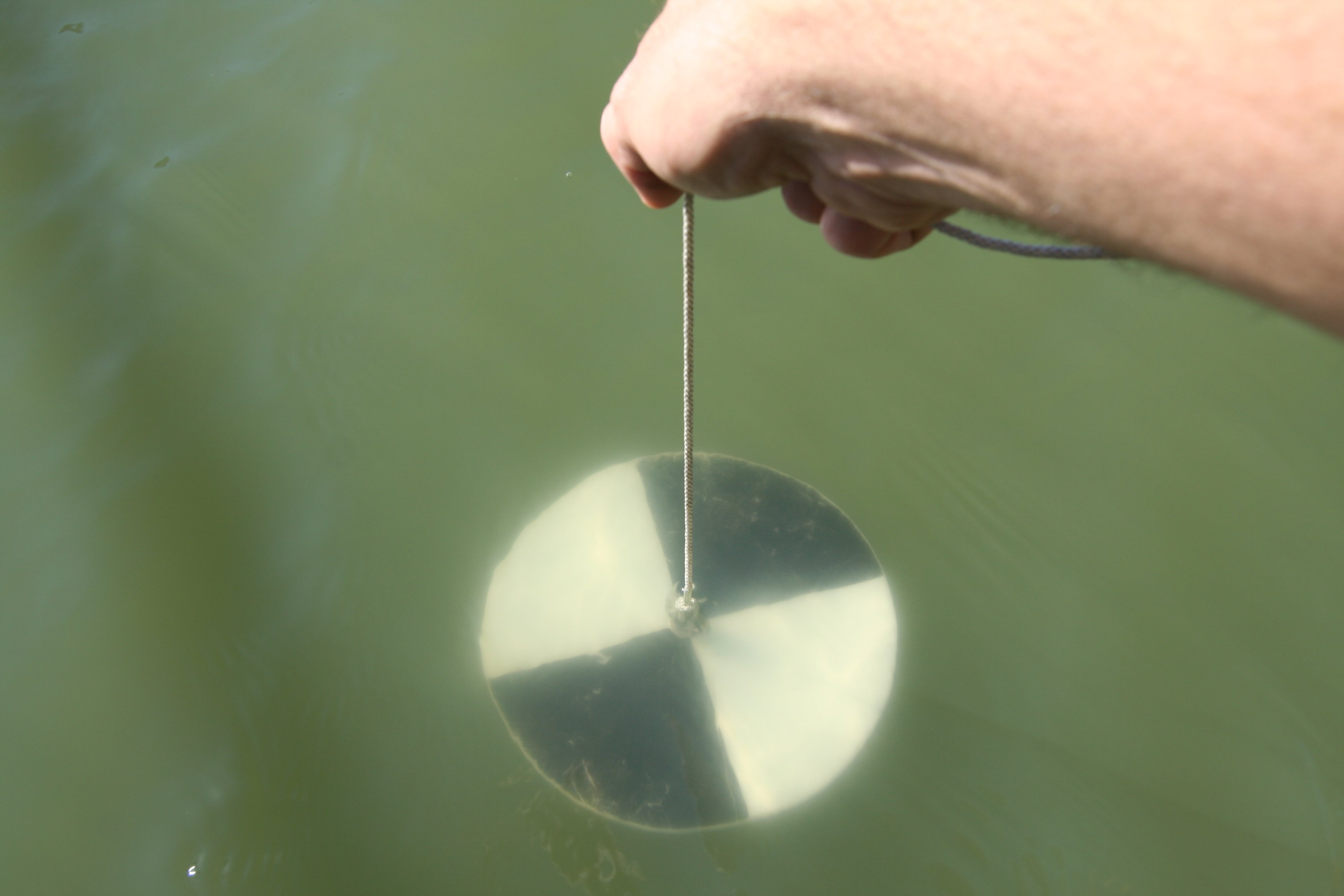
A beneficial phytoplankton bloom exhibits a secchi depth of 18-24” of visibility. Now, as you can imagine, clear ponds have a lower density of these algae organisms throughout the water column whereas ponds with a deep green color have a heavier density.
Clearer Ponds are Lower in Nutrient Quality Compare to Ponds with Good Algae
This explains why clear ponds typically are less productive when it comes to growth and development of your fish species. Increasing the availability of resources at the bottom of the food chain helps to increase the resources that are then available to all fish throughout the food chain. Increased availability of resources, the quicker and larger your Bass will grow. The photo below shows a proper planktonic algae bloom.
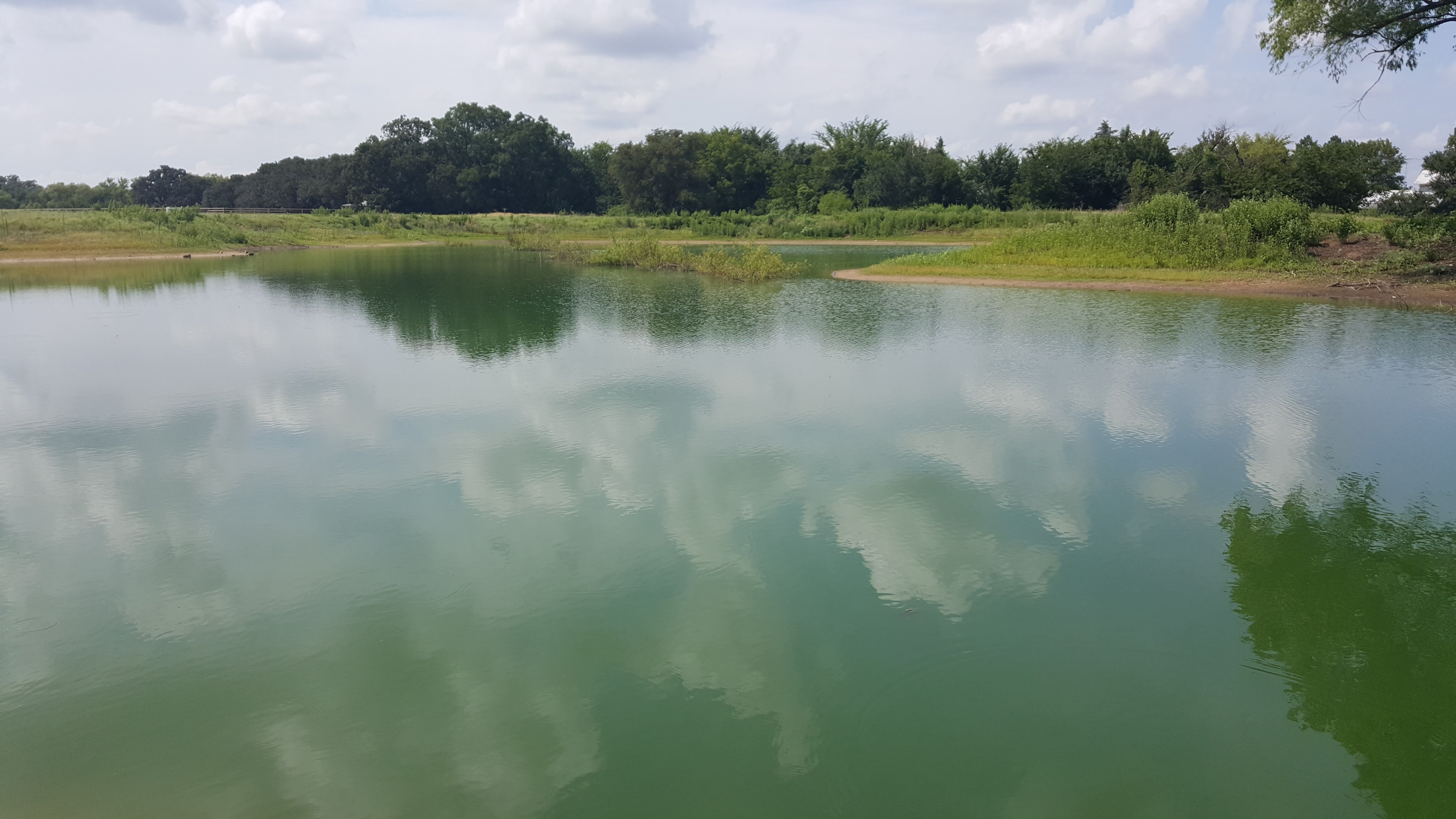
Utilize Algae for Vegetation Control and Bass Growth
Beyond providing additional resources for all aquatic animals within your fishery, proper phytoplankton blooms also provide other benefits to your pond or lake. This comes in the way of limiting light transmission through the water. At ideal densities, these tiny plant cells are so thick that the sunlight isn’t able to reach beyond a couple feet below the surface. This provides two key management benefits to your fishery.
How Does Limiting Sunlight Help a Pond?
The first benefit is reducing the suitable areas that rooted aquatic plants are able to grow. Helping to limit the efforts that you will need to expend on controlling their nuisance vegetation growth during the peak growing season.
Secondly, this reduced clarity reduces the distance that your forage species can spot lurking predators, making it easier for the predator to capture prey. For species like Largemouth Bass that are ambush predators, this means that they will expend less energy in capturing their prey instead of having to chase it down. This then turns into more energy that is used for growth instead of maintaining their current condition. (Lazy Bass = Fat Bass)
Be Wary of Algae Blooms in Smaller Ponds
Now you might be wondering how you can increase the density of planktonic algae (phytoplankton) in a pond that is clear. The answer to that question is applying aquatic fertilizer.
Know the Proper Steps for Pond Fertilization
There are some caveats that need to be covered before you go out and start applying fertilizer, though.
For starters, we only recommend this management practice in larger ponds or lakes, greater than 2 acres. This is because in smaller fisheries there is a greater risk of the algae bloom becoming too dense, causing oxygen depletion issues that could result in loss of fish.
The photo below shows a heavy planktonic bloom that could pose potential risk to your fish.
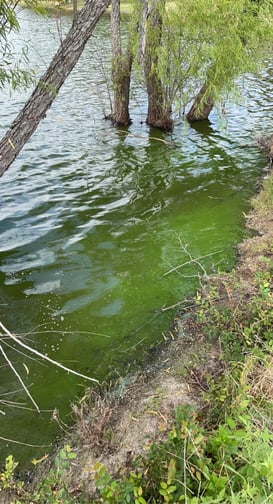
Additionally, if there are already other species of aquatic vegetation present, then these species could utilize the additional nutrients before the phytoplankton. Creating an abundance of nuisance vegetation.
When is the Best Time to Fertilize a Small Pond or Private Lake?
The best time of the year to start applying fertilizer is early spring, once water temperatures are steadily 60 degrees. Additionally, the alkalinity of the water plays a key role in ensuring that the natural change in pH is buffered and doesn’t have any drastic swings, 20 mg/L CaCO3 or greater is sufficient to fertilize. After you have ensured your pond or lake fits these parameters, find a quality aquatic fertilizer and follow their recommendations for application rates.
Improper Fertilization can Create Bad Algae Blooms
These recommendations do need to be followed to the letter. In much the same way small ponds can have too heavy of a bloom, so can larger fisheries if applied at the incorrect rates. This is definitely one of those cases where more than recommended doesn’t mean better results.
If you have any questions, contact a fisheries professional before applying.
Beneficial algae blooms (phytoplankton) can be extremely beneficial to your fishery when they are in the proper density. As you can see, it’s a simple pond management strategy that can have a huge rate of return on your investment, but it does need to be approached with caution.
Contact a Fisheries Biologist to Improve the Good Algae in Your Pond
If you have any other questions about algae blooms or helping to stimulate an algae bloom in your fishery, feel free to contact us anytime or give the Pond King biologists a call to help with your private pond management. See y’all down at the pond!


